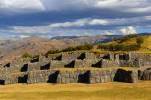- Joined
- Oct 30, 2014
- Messages
- 36,768
- Points
- 113
They should have coloured the pictures.
Bangkok once also had good white French star forts in the late 1600s. But the racist thais demolished them after the throne was usurped by a racist redneck. Maybe you might have seen this Thai tv drama before.
As an important outpost guarding the Chao Phraya, Bangkok (then located on the west bank of the river) was protected by city walls. A pair of forts were located at the confluence of the old river channel and the new main channel excavated around 1538, straddling the new channel. Western maps of the late 17th century show the city wall in a rectangular shape, with the western fort as a cavalier raised over the southeast corner. Two smaller bastions protected the northwest and southwest corners.[1]
Around 1685–1687, the French-oriented King Narai commissioned the construction of Western-style bastion forts to replace them. Construction was overseen by French engineer de la Mare, but only the eastern fort had been completed when resentment of the French's growing influence led to the Siamese revolution of 1688. The French garrison holding the fort was besieged by Siamese troops for four months before being allowed to retreat, and the fort was subsequently demolished during the reign of Phetracha, who usurped the throne.[2]
Plan for construction of river forts at Bangkok, by French engineer Monsieur de Lamare, from Michel Jacq-Hergoualc’h. L’Europe et le Siam du XVIe au XVIIIe Siecle. Paris: L’Harmattan, 1993.





